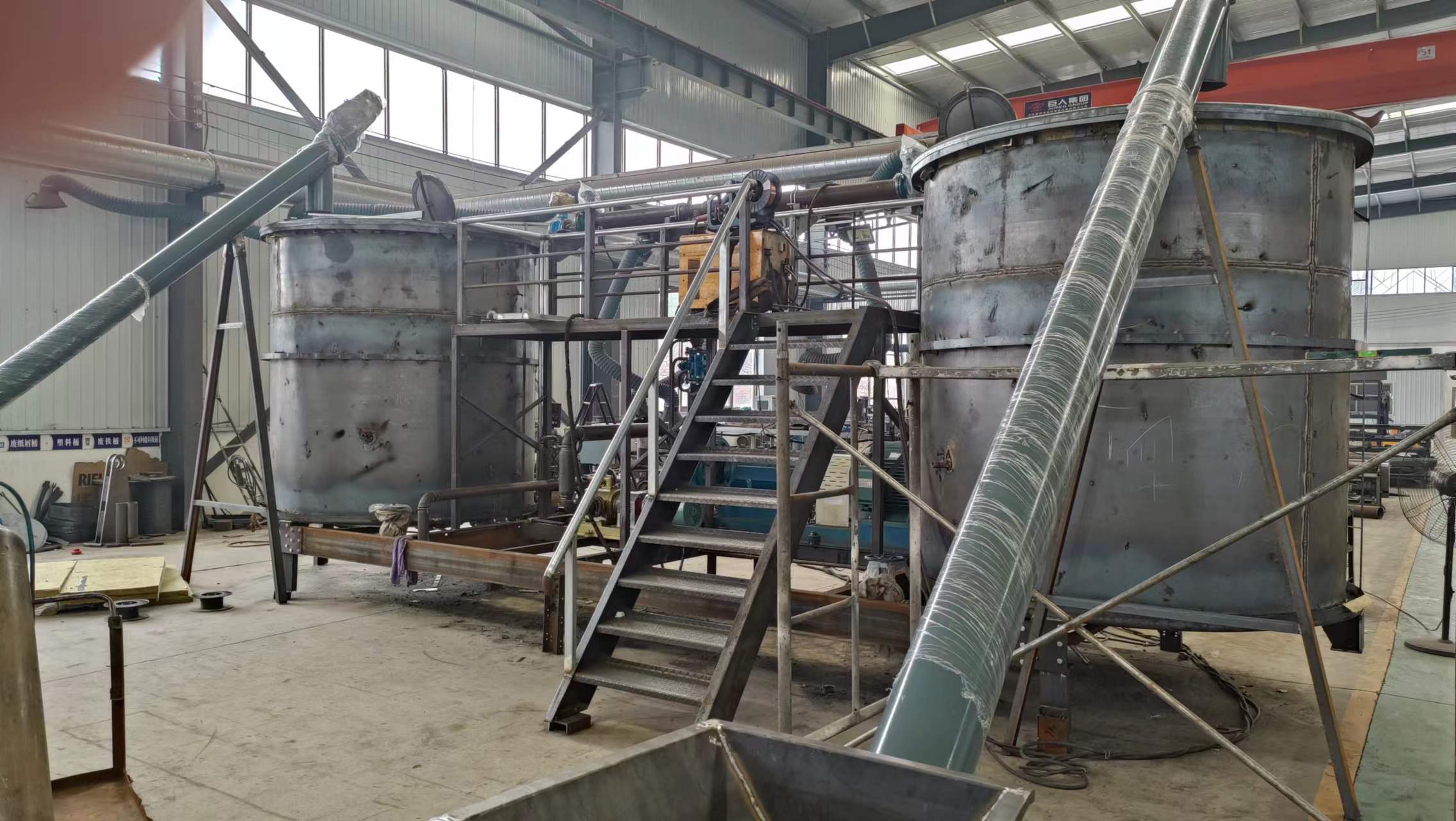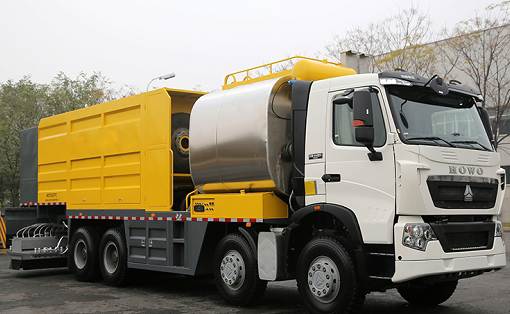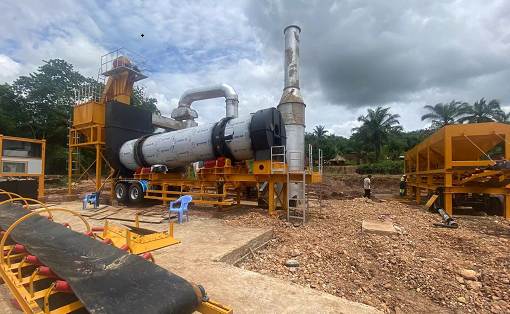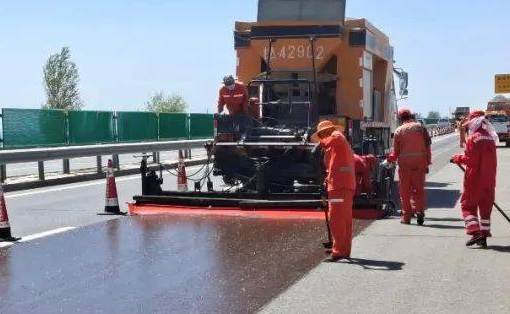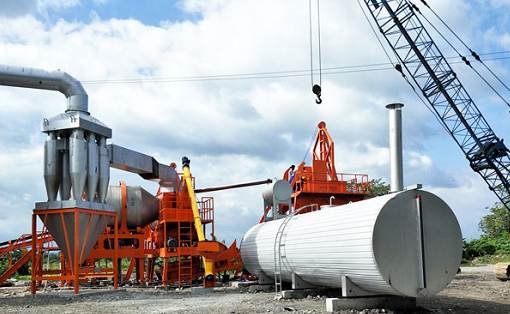Modified production process of emulsified asphalt
Emulsified asphalt is to melt the asphalt and disperse it in a water solution containing a certain amount of emulsifier in the form of tiny droplets through the action of emulsifier and machinery to form an oil-in-water asphalt emulsion. This emulsion is in the form of dry liquid at room temperature. Modified emulsified asphalt refers to a modified asphalt mixed emulsion with certain characteristics prepared by blending, mixing and preparing it with emulsified asphalt as the base material and asphalt modification material as the external modification material under a certain process flow. This mixed emulsion is called modified emulsified asphalt.
The modified production process of emulsified asphalt can be divided into four categories:
1. Adding latex modifier after making emulsified asphalt, that is, emulsification first and then modification;
The production process is to grind the hot asphalt and emulsifier soap solution together through colloid mill to make ordinary emulsified asphalt, and then add the latex modifier to the emulsified asphalt through mechanical stirring to make modified emulsified asphalt. The advantage of this method is that it does not require high equipment, and the disadvantage is that it is suitable for latex modifiers.
2. The latex modifier is mixed into the emulsifier aqueous solution, and then it enters the colloid mill together with the asphalt to produce modified emulsified asphalt;
3. The latex modifier, emulsifier aqueous solution, and asphalt are put into the colloid mill at the same time to produce modified emulsified asphalt (the two methods 2 and 3 can be collectively referred to as emulsification and modification);
The modifier is mixed into the emulsifier soap solution, and then the “modified” soap solution and asphalt are put into the colloid mill together to make modified emulsified asphalt; or the modifier is not pre-added to the emulsifier soap solution, but is placed in a tank separately, and finally mixed with the emulsifier, acid, water, etc. in the pumping pipeline and then enters the colloid mill together with the hot asphalt.
The method of adding latex modifier to the soap tank has the advantage that it is exactly the same as the process of producing ordinary emulsified asphalt, and no changes are required to the production equipment; the disadvantage is that when using this method to produce modified emulsified asphalt, the metering of the modifier is subject to certain restrictions, and the modifier latex is required to be able to withstand the pH value of the soap solution. The method of directly connecting the latex modifier to the colloid mill through a pipeline can overcome the above disadvantages, but it requires necessary improvements to the ordinary emulsified asphalt equipment before it can be used for the production of modified emulsified asphalt.
4. Emulsify the modified asphalt to produce emulsified modified asphalt.
The ready-made modified asphalt is heated to a certain temperature, becomes a flowing state, and then enters the colloid mill together with the soap solution to make emulsified modified asphalt. In the entire asphalt production process, due to the high viscosity characteristics of the asphalt itself and the high temperature environment required for production, various high-performance pumps and valves play a vital role in the asphalt transportation process.
Emulsified asphalt is to melt the asphalt and disperse it in a water solution containing a certain amount of emulsifier in the form of tiny droplets through the action of emulsifier and machinery to form an oil-in-water asphalt emulsion. This emulsion is in the form of dry liquid at room temperature. Modified emulsified asphalt refers to a modified asphalt mixed emulsion with certain characteristics prepared by blending, mixing and preparing it with emulsified asphalt as the base material and asphalt modification material as the external modification material under a certain process flow. This mixed emulsion is called modified emulsified asphalt.
The modified production process of emulsified asphalt can be divided into four categories:
1. Adding latex modifier after making emulsified asphalt, that is, emulsification first and then modification;
The production process is to grind the hot asphalt and emulsifier soap solution together through colloid mill to make ordinary emulsified asphalt, and then add the latex modifier to the emulsified asphalt through mechanical stirring to make modified emulsified asphalt. The advantage of this method is that it does not require high equipment, and the disadvantage is that it is suitable for latex modifiers.
2. The latex modifier is mixed into the emulsifier aqueous solution, and then it enters the colloid mill together with the asphalt to produce modified emulsified asphalt;
3. The latex modifier, emulsifier aqueous solution, and asphalt are put into the colloid mill at the same time to produce modified emulsified asphalt (the two methods 2 and 3 can be collectively referred to as emulsification and modification);
The modifier is mixed into the emulsifier soap solution, and then the “modified” soap solution and asphalt are put into the colloid mill together to make modified emulsified asphalt; or the modifier is not pre-added to the emulsifier soap solution, but is placed in a tank separately, and finally mixed with the emulsifier, acid, water, etc. in the pumping pipeline and then enters the colloid mill together with the hot asphalt.
The method of adding latex modifier to the soap tank has the advantage that it is exactly the same as the process of producing ordinary emulsified asphalt, and no changes are required to the production equipment; the disadvantage is that when using this method to produce modified emulsified asphalt, the metering of the modifier is subject to certain restrictions, and the modifier latex is required to be able to withstand the pH value of the soap solution. The method of directly connecting the latex modifier to the colloid mill through a pipeline can overcome the above disadvantages, but it requires necessary improvements to the ordinary emulsified asphalt equipment before it can be used for the production of modified emulsified asphalt.
4. Emulsify the modified asphalt to produce emulsified modified asphalt.
The ready-made modified asphalt is heated to a certain temperature, becomes a flowing state, and then enters the colloid mill together with the soap solution to make emulsified modified asphalt. In the entire asphalt production process, due to the high viscosity characteristics of the asphalt itself and the high temperature environment required for production, various high-performance pumps and valves play a vital role in the asphalt transportation process.







